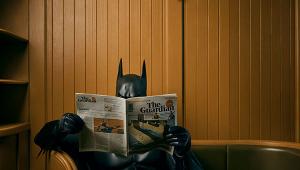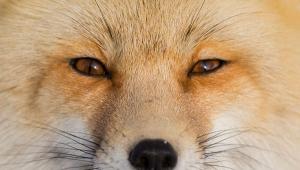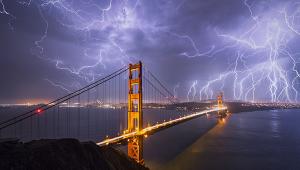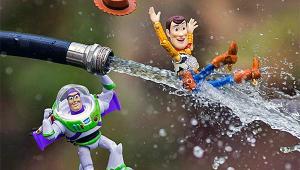Ultralight Aerial Photographer Chris Dahl-Bredine Goes To Extraordinary Heights To Pursue His Dream

All Photos © Chris Dahl-Bredine
Ever had the flying dream? You know, the one that lets you leap skyward and soar like a bird? Flying dreams are quite common and are among the most pleasurable of sleep states. Psychologists say they’re actually one way people find release from stress.
Aerial photographer Chris Dahl-Bredine was one such dreamer, and while he’s not sure how big a role the flying dream played in his eventually becoming an ultralight pilot, he’s certain it was a significant factor. And, once he began flying, he reports—as do other pilots (the author included)—that the dream simply stopped. He considered becoming a licensed private pilot so he could fly light planes but once he experienced the thrill of ultralights, he realized it helped him recapture the dream: flying like a bird, wind in his face, view unencumbered by a cockpit.
“In 2002, after years of dreaming of flight, I finally decided to try it out at a school near Phoenix, Arizona,” Dahl-Bredine recalls. “It took only one beautiful sunset flight and I was hooked. My dream became real as I started flying my own ‘trike.’”
If Guinness had a record for the highest flying ultralight aerial photographer, Dahl-Bredine would probably win hands down. He routinely pushes his frail craft to 12,000-16,000 feet in pursuit of his passion: photographing the mountains and landscapes of the American Southwest year-around.



Up In The Air
Dahl-Bredine has even taken his flying “trike” (and his trusty Canon EOS 5D Mark II) to 18,000 feet, but that was before the FAA began restricting ultralights to 2,000 feet above ground level.
“This is not a problem for me since I often start out at 7,000 feet at my home base in Taos, New Mexico, and photograph mountains that range up to 14,000 feet,” he explains. “Flying 2,000 feet above ‘ground level’ gives me more than sufficient height to get the images I want.”
At these altitudes he needs oxygen and, in winter, bundles up in arctic gear to combat sub-freezing temperatures in his open cockpit.
For Dahl-Bredine, flying came first and photography followed. He was so taken with the amazing mountain and landscape vistas he was seeing from his bird-like perch, he developed the urge to share these spectacular sights with others. He’s also a devoted environmentalist and, in the years he’s been flying, has seen the progressive desertification and degradation of the Southwestern landscape, resulting from the long-running global warming-induced drought in the region.
“I’ve made it my mission to capture the magical beauty of the Southwest while also paying attention to the changes being wrought by our continued disregard for the impact of greenhouse gasses,” he says.
“I had been interested in photography for years and taken some classes, but never pursued it as I have since learning to fly. It was a pretty natural progression after seeing what it was like up there and wanting to share it.”
To increase his skills, Dahl-Bredine also trained in mountain flying and flying with skis in the French Alps with Franck Toussaint, a master pilot and now a friend.
“I continue to study weather patterns as I fly in the mountains of Colorado and New Mexico. It fascinates me how the air moves and is constantly being affected by the heating and cooling and shapes of the land.”



Gear Check
Dahl-Bredine flies a French Air Creation ultralight. They can be found for under $10,000 used, but like anything, one can pay a lot more for one with all the bells and whistles. The Rotax engine in his ultralight provides an excellent weight (480 pounds) to power ratio, enabling a good climb rate and maneuverability in the thin mountain air.
“On a good day, when alone in the two-passenger trike, I can climb from the airport at 7,000 feet to 12,000 feet in around 10 minutes. The climb rate, of course, is slower if I have a passenger or am carrying camping gear or a mountain bike. I usually like to go up for at least an hour or two.
“I feel comfortable landing and taking off in winds up to 20 mph. As for winds aloft, I’m fine in pretty high winds as long as the flow is smooth and I’m not near any ridge tops or peaks.
“I think ultralights offer many advantages over standard aircraft for photography. The most obvious is an open cockpit for a better view, but they also can land in many more places and, even if the engine dies, are easy to glide and land. Also, they have a very tight turn radius that makes them more maneuverable and enables better positioning for a shot. And, after initial purchase, trikes are very inexpensive to operate.”
Dahl-Bredine also routinely packs up the ultralight and hauls it nearer to locations he wants to shoot. Its extremely short takeoff and landing roll turn almost any flat piece of ground into a runway.



Shooting And Flying
While he currently shoots with the Canon 5D II, Dahl-Bredine plans to upgrade when the next version of the camera is released. His preferred lens is a Zeiss 35mm prime because he finds the lens’ manual focus is actually easier to use while flying. He also appreciates its edge-to-edge sharpness.
“I just focus at infinity and tape the focus ring in place on the off chance that vibration would defocus the lens,” he explains. “Obviously, there’s no need to focus when you’re working from these heights. And there’s not much concern for depth of field. I also have a gyro stabilizer attached to the camera and shoot down to 1/60th pretty consistently.”
His camera stabilizer is a Kenyon Labs Gyro, which he screws to the bottom of the camera and spins at 20,000 rpm, damping the majority of small vibrations. On smooth days he says he flies with one hand and shoots with the other, or takes both hands off the controls for better framing. “The gyro makes a big difference, especially in low-light or bumpy conditions.”
Dahl-Bredine shoots in Raw and uses Photoshop to bring the Raw images back to how he remembers them. “I love seeing the images printed huge. At 30x40 inches or more they really come to life!”
Close calls?
“As far as danger is concerned, I feel safer up there than driving down the road,” he notes. “I have had my share of hair-raising moments, mostly landing in snow on mountain tops. Also, I’ve sometimes turned the engine off to glide and enjoy the peace and quiet. A couple of times it wouldn’t restart, so I had to glide to an emergency landing.
“I’m so often moved by what I see up there—the light, the landscapes, the clouds, the mountain peaks—I know I’m seeing something special. I feel connected to the world and grateful to be alive and part of it. It’s very life affirming to witness such natural beauty and I’m happy I’m able to share these images with others.”
To see more of Chris Dahl-Bredine’s work, visit his website at: www.taosaerialimages.com.
















































